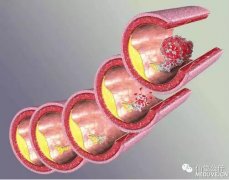
根据一项最近发表于《Oncotarget》期刊的新研究,瑞典卡罗林斯卡学院(Karolinska Institutet)研究人员在2型糖尿病大鼠模型中识别出特定神经细胞中的改变。由于这些神经细胞对气味识别很重要,因此新的发现或许可以解释为什么2型糖尿病患者经常出现嗅觉问题,同时可能开启新的研究领域,为对抗2型糖尿病患者中的神经退行性疾病开发预防性疗法。
众所周知的是,2型糖尿病患者经常遭受神经退行性疾病比如阿尔茨海默病的侵袭。这些神经退行性疾病的一个早期症状是气味识别能力的下降。这种嗅觉问题也经常出现在2型糖尿病患者中,暗示嗅觉下降可能与神经退行性疾病的发展相关联。然而,截至目前,2型糖尿病中负责这些嗅觉问题的神经细胞一直没有被充分认识。
在新的研究中,卡罗林斯卡学院的研究人员在2型糖尿病大鼠的梨状皮层中识别出中间神经元中的改变。梨状皮层是大脑的一个区域,在气味的识别和编码中扮演着至关重要的角色。研究人员还表明,所识别的神经改变可以被临床使用的抗糖尿病药物胰升血糖素样肽1(glucagon-like peptide 1)在药理学上抵消。
"在2型糖尿病人群中,神经退行性疾病的发病率较高"该研究作者之一Grazyna Lietzau说,"我们认为,这些发现对于开发预防性药物疗法来对抗这些患者中的阿尔茨海默病和帕金森病可能是重要的。"(生物谷Bioon.com)

DOI: 10.18632/oncotarget.6823
Type 2 diabetes-induced neuronal pathology in the piriform cortex of the rat is reversed by the GLP-1 receptor agonist Exendin-4
Type 2 diabetes (T2D) patients often present olfactory dysfunction. However, the histopathological basis behind this has not been previously shown. Since the piriform cortex plays a crucial role in olfaction, we hypothesize that pathological changes in this brain area can occur in T2D patients along aging. Thus, we determined potential neuropathology in the piriform cortex of T2D rats, along aging. Furthermore, we determined the potential therapeutic role of the glucagon-like peptide-1 receptor (GLP1-R) agonist exendin-4 to counteract the identified T2D-induced neuropathology.
Young-adult and middle-aged T2D Goto-Kakizaki rats were compared to age-matched Wistars. Additional Goto-Kakizaki rats were treated for six weeks with exendin-4/vehicle before sacrifice. Potential T2D-induced neuropathology was assessed by quantifying NeuN-positive neurons and Calbindin-D28k-positive interneurons by immunohistochemistry and stereology methods. We also quantitatively measured Calbindin-D28k neuronal morphology and JNK phosphorylation-mediated cellular stress. PI3K/AKT signalling was assessed by immunohistochemistry, and potential apoptosis by TUNEL.
We show T2D-induced neuronal pathology in the piriform cortex along aging, characterized by atypical nuclear NeuN staining and increased JNK phosphorylation, without apoptosis. We also demonstrate the specific vulnerability of Calbindin-D28k interneurons. Finally, chronic treatment with exendin-4 substantially reversed the identified neuronal pathology in correlation with decreased JNK and increased AKT phosphorylation.
Our results reveal the histopathological basis to explain T2D olfactory dysfunction. We also show that the identified T2D-neuropathology can be counteracted by GLP-1R activation supporting recent research promoting the use of GLP-1R agonists against brain diseases. Whether the identified neuropathology could represent an early hallmark of cognitive decline in T2D remains to be determined.



